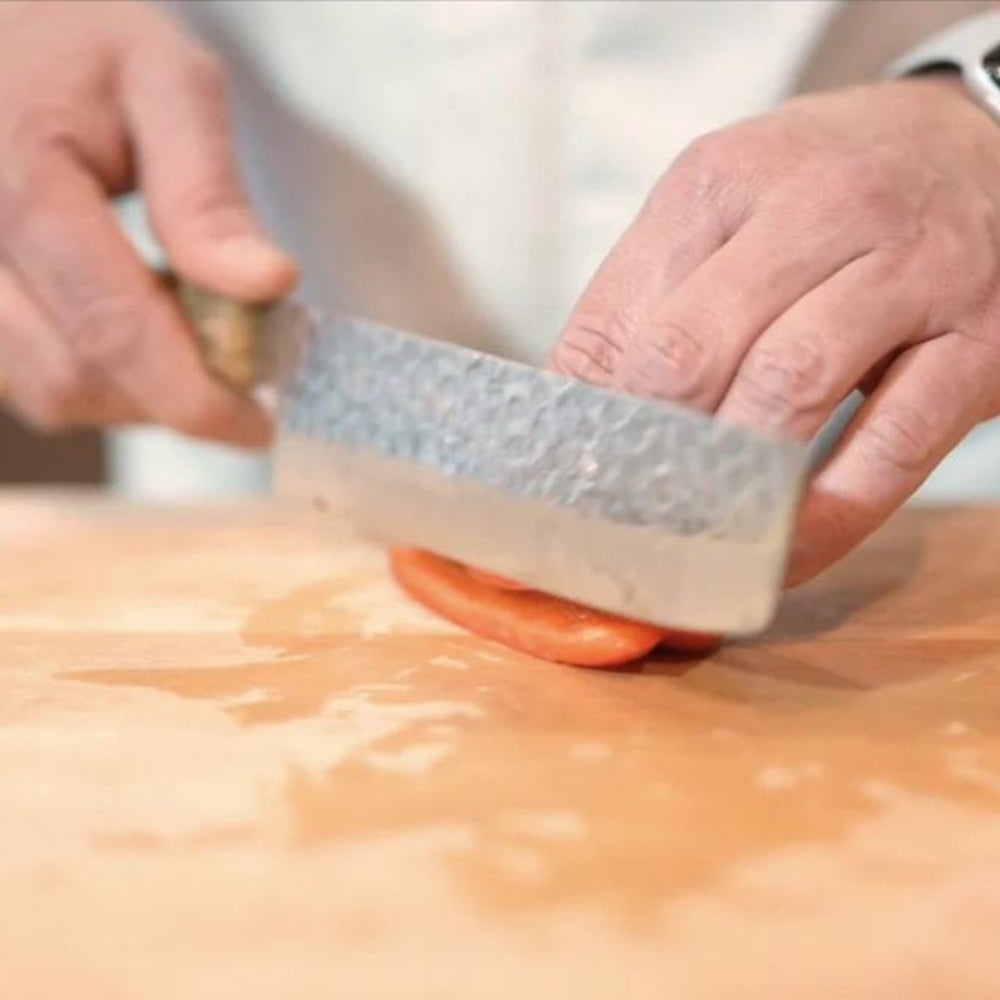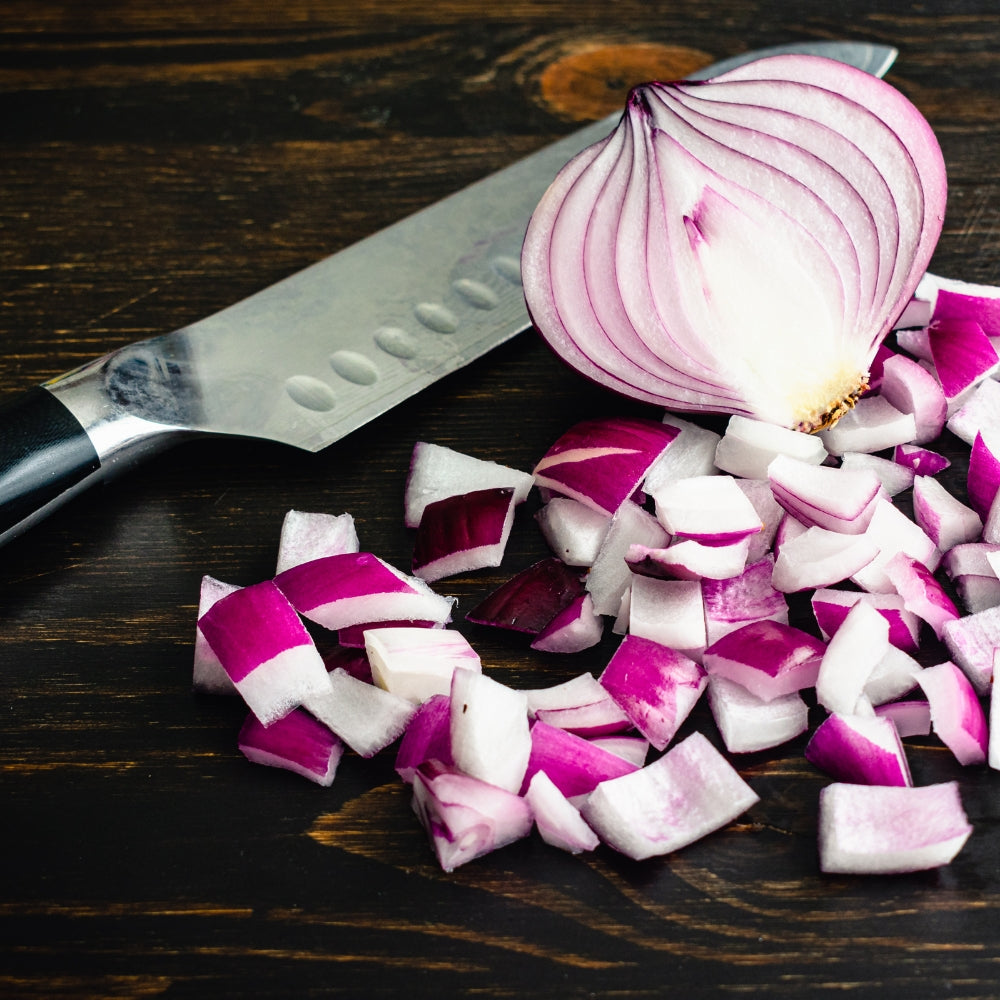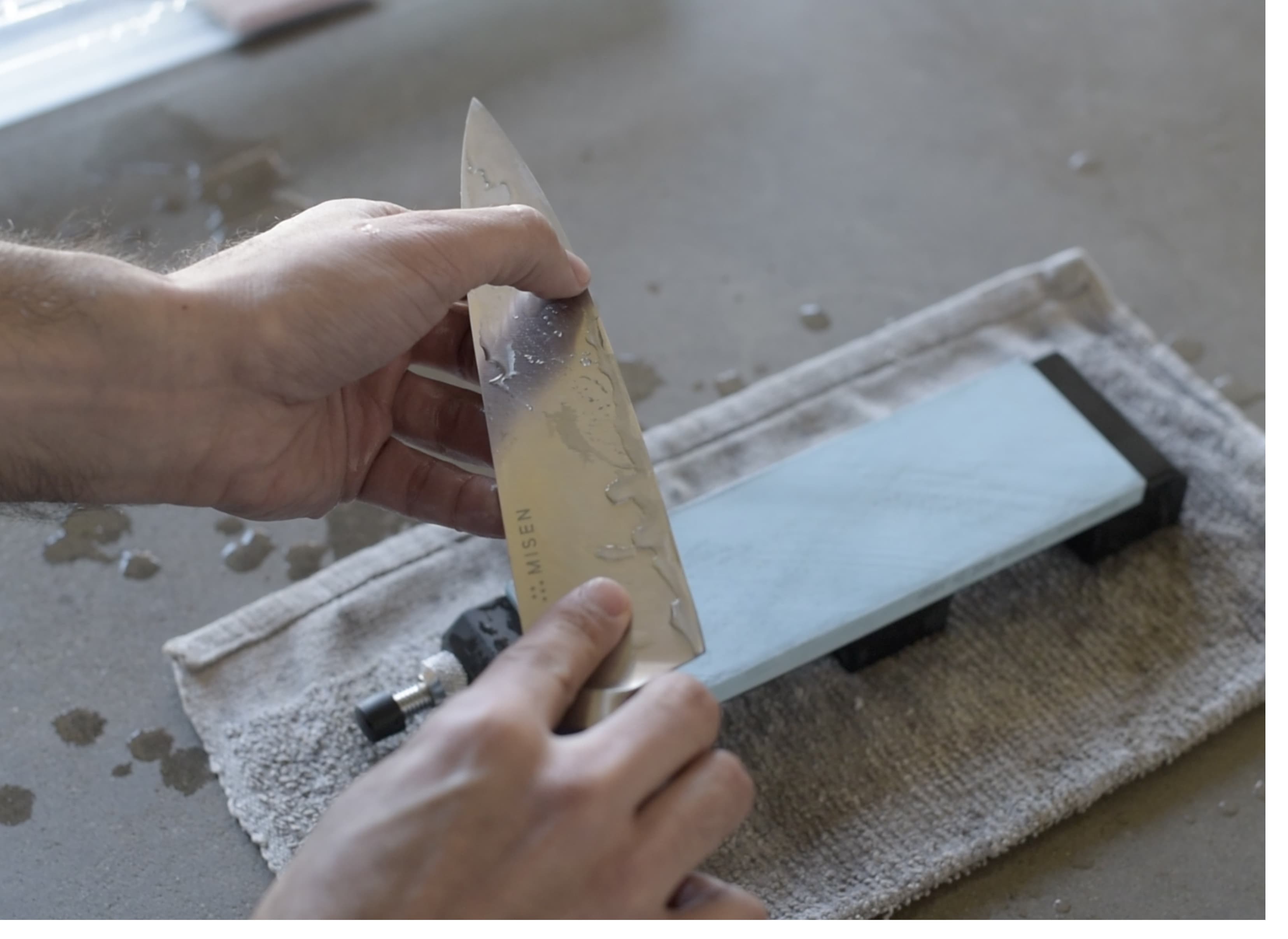
Kiritsuke Knife Use: A Home Cook's Essential Guide
By Kenny Trusnik
Senior Food Writer at Pro Home Cooks
Whether you're an experienced home cook or just starting out, understanding how to use a kiritsuke knife can take your culinary skills to the next level. These Japanese knives are renowned for their agility and precision, making them a popular choice among chefs worldwide. The unique design of the kiritsuke knife makes it versatile for various kitchen tasks such as slicing sashimi and chopping vegetables. Mastering this tool requires more than simply knowing how to hold it; proper technique and maintenance are also crucial. In this guide, we'll delve into the intricacies of effectively using a kiritsuke knife. Additionally, we'll provide tips on how to maintain its sharpness so that your knife remains in top condition. If you're ready to enhance your cooking experience with exceptional kiritsuke knife usage, let's get started!
Ready to elevate your culinary game? Dive deeper into our top picks and discover the best knives for your kitchen. Explore now!
Table Of Contents:
- What is a Kiritsuke Knife?
- Kiritsuke Knife Anatomy
- Kiritsuke Knives in Modern Cuisine
- How to Use a Kiritsuke Kitchen Knife
- Decoding Your Kiritsuke Knife
- Grip It Right
- The Cutting Edge Methods
- Maintaining Your Blade
- FAQs in Relation to Kiritsuke Knife Use
- Why is kiritsuke difficult to use?
- Is kiritsuke an all purpose knife?
- Is a Kiritsuke knife good?
- What is a kiritsuke knife style?
What is a Kiritsuke Knife?
Diving into the core of Japanese cuisine, we come across a fascinating utensil - the Kiritsuke knife. It's like a two-in-one package, borrowing elements from both Yanagiba and Usuba knives. You can most likely find this chef knife in most Japanese kitchens.
Thanks to its long, slender blade reminiscent of a Yanagiba, it's an ace at slicing. And yet, when you need to chop vegetables finely or precisely julienne them? Its broad width and straight edge inspired by the Usuba comes in handy.
Kiritsuke Knife Anatomy
A traditional kiritsuke knife has a single-bevel design that sets this Japanese knife apart – one side remains flat while the other angles towards it creating an acute point for sharp cuts.
This structure requires control during use but delivers precise results that can be difficult to match with other knives. Plus, with lengths typically between 8-10 inches, these knives offer enough cutting surface without overwhelming your hand.
Kiritsuke Knives in Modern Cuisine
How to Use a Kiritsuke Kitchen Knife
You've got your hands on a traditional Japanese master chef's tool, the versatile Kiritsuke knife. This blade is no ordinary kitchen accessory - it demands understanding and respect. Below we will show you how you can leverage it in your home cooking.
Decoding Your Kiritsuke Knife
This isn't just any knife; with an angled tip perfect for precision tasks like julienning vegetables or slicing fish, the kiritsuke means business. Its flat edge also allows for one clean cut through ingredients without damaging their cell structure – talk about efficiency.
Grip It Right
To really take control of this blade, you'll need to master it's different grip techniques. The most common method? The 'pinch grip'. By pinching the blade between your thumb and forefinger while wrapping your remaining fingers around the handle, you'll have optimal control during those precise cutting motions.
The Cutting Edge Methods
Your kiritsuke is designed for three primary cutting methods: push-cutting, pull-cutting, and chopping. Whether you're preparing thin slices of sushi-grade fish using push-cutting or tackling long veggies like cucumbers with pull-cutting or taking down denser foods such as root vegetables by chopping – there's a technique tailored perfectly to each task.
Maintaining Your Blade
Kiritsuke knives are not low maintenance tools but caring for them properly will keep them at peak performance longer. Clean after each use (no exceptions), dry immediately to prevent rusting (water damage who?), and sharpen regularly using whetstones instead of honing rods due to their single-beveled nature - all part of owning this Japanese masterpiece.
Becoming proficient in these practices won't happen overnight but stick with it because once mastered they allow full use of this multi-functional wonder. With time, you'll be slicing, dicing, and mincing with professional ease. Next up, a comparison guide discussing different types of kiritsuke knives available today—perfect if you're considering adding another one to your culinary collection.
Embrace the art of traditional Japanese cooking with your Kiritsuke knife. Master the 'pinch grip' for optimal control and explore its versatility through push-cutting, pull-cutting, and chopping techniques. Remember, this blade isn't just any kitchen tool - it demands proper care to maintain it's best performance. Stick with it and soon you'll be slicing like a pro.
FAQs in Relation to Kiritsuke Knife Use
Why is kiritsuke difficult to use?
The Kiritsuke knife requires precision and control due to its long, straight blade and angled tip. It's typically used by experienced chefs for complex cuts.
Is kiritsuke an all purpose knife?
In Japan, the Kiritsuke is considered a multi-purpose tool suitable for most kitchen tasks including cutting vegetables or meats.
Is a Kiritsuke knife good?
Yes, it is. The versatility of the Kiritsuke makes it an excellent choice for many home cooks. Its sharp edge ensures precise cutting every time.
What is a kiritsuke knife style?
Kiritsuke knives are traditional Japanese blades with long straight edges perfect for swift chopping motions, while their pointed tips allow detailed work like julienning vegetables or filleting fish.
Transform your kitchen experience with the best Japanese kitchen knives handpicked by Mike. Don't miss out on these essentials. Check out our top selections now!
TOP ARTICLES

Sourdough Baking School
Master the art of sourdough bread baking in the most comprehensive baking class on the internet. This class features over three hours of baking content to help you start your sourdough journey.
See More



